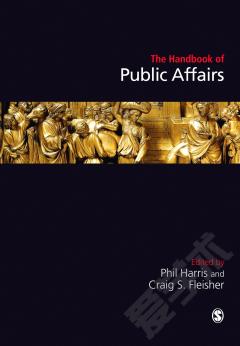Chambers' Corporate Governance Handbook
Part A: Effective Boards and Directors Chapter A1 The Effective Board Chapter A2 Considering Joining a Board Chapter A3 Independence Issues Chapter A4 Resigning a Directorship Chapter A5 Board Committees Chapter A6 Board Policies and Policy Statements Chapter A7 Family Firms and their Governance Chapter A8 Governance of International Organisations Chapter A9 Directors with Company Loans: Independence and Conflict of Interest Implications Part B: Guest Chapters Chapter B1 Avoiding the Pitfalls in Running a Private Company Chapter B2 Board Dynamics: Evaluating Board Effectiveness Chapter B3 Board Dynamics: A Female Perspective Chapter B4 Board Dynamics: The Chairman's Perspective Chapter B5 Board Dynamics: The Non-Executive Director's Perspective Part C: Understanding Corporate Governance Chapter C1 Understanding Corporate Governance Chapter C2 Grand Themes in Corporate Governance Chapter C3 Applying the Theories that Underpin Corporate Governance Chapter C4 Do Non-Executive Directors Add Value? Chapter C5 Corporate Social Responsibility, Integrated Reporting and Sustainability Chapter C6 Culture, Ethics and the Board Part D: Corporate Governance in Practice Chapter D1 The UK's Companies Act 2006 - Corporate Governance Issues Chapter D2 The UK Approach to Corporate Governance Chapter D3 Critique of UK Corporate Governance Chapter D4 The Walker Review of Corporate Governance in UK Banks and other Financial Industry Entities Chapter D5 Checklist to Benchmark Corporate Governance Practice in the Context of the UK Corporate Governance Code Chapter D6 British Governance Standard (2013) - Code of Practice for Delivering Effective Governance of Organizations Chapter D7 Gulf Corporate Governance Part E: Audit Committees Chapter E1 Overview of Audit Committee Responsibilities Chapter E2 Effective and Efficient Conduct of Audit Committee Business Chapter E3 Audit Committees and Sarbanes-Oxley in the UK Chapter E4 Audit Committee Oversight of Published Information Chapter E5 Audit Committee Oversight of Risk Management and Internal Control Chapter E6 Audit Committee Oversight of External Audit Chapter E7 Audit Committee Oversight of Internal Audit and other Review Agencies Chapter E8 The Development of Audit Committees over Time Chapter E9 Board Risk Committees Chapter E10 Board Remuneration Committees Part F: The Corporate Governance Journey Chapter F1 The Corporate Governance Framework Chapter F2 Evolution of the UK Code and the Impact of Higgs and Smith Part G: Risk Management and Internal Control Chapter G1 Risk Management and Internal Control Chapter G2 Current Developments in Internal Auditing Chapter G3 Three Lines of Defence Chapter G4 New Enhanced Guidance on Internal Audit Chapter G5 New Enhanced Guidance on Internal Audit's Interface with Regulators Part H: External Oversight Chapter H1 External Control Chapter H2 Is Audit failing the Global Capital Markets? Appendix 1 The UK Corporate Governance Code Appendix 2 The UK Stewardship Code Appendix 3 The Chartered Director (C Dir) qualification Appendix 4 Board Committees - Terms of Reference Appendix 5 Suggestions for Good Practice from the Higgs Report Appendix 6 Cadbury, Greenbury and 1998 Combined Codes Appendix 7 Code of Ethics Appendix 8 International Standards for the Professional Practice of Internal Auditing Appendix 9 Independent External Board Evaluations Code of Practice
{{comment.content}}








 京公网安备 11010802027623号
京公网安备 11010802027623号